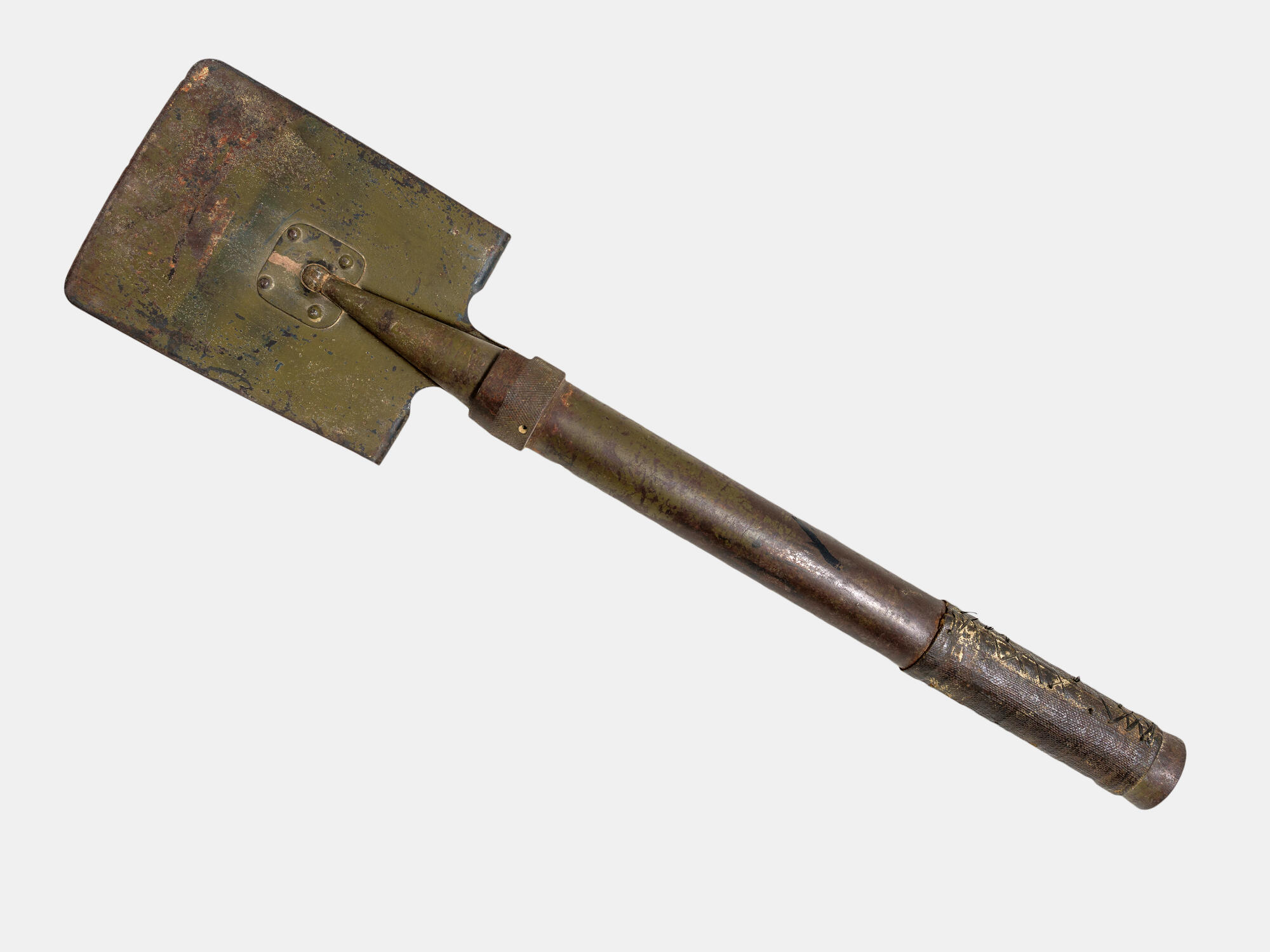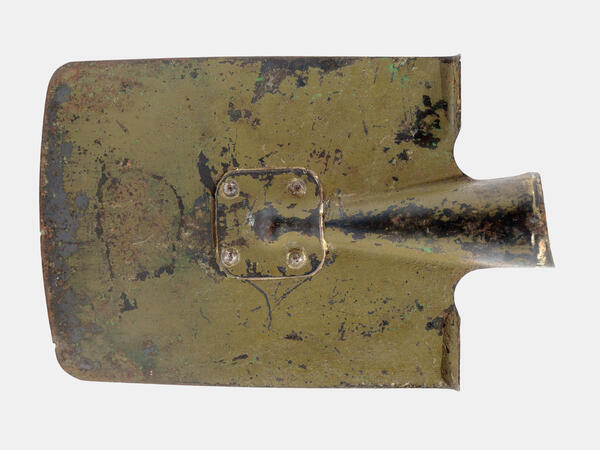The last invention of Mikhail Grigoryevich Dyakonov — a designer of artillery ammunition, explosive devices and fuses in the Russian Empire and the USSR — was a 37-millimeter single-barrel spade-mortar, developed in 1938 for the Red Army.
While on the move, soldiers used the mortar as a spade; the barrel served as a handle. Like an ordinary small sapper spade, the spade-mortar could be used for digging trenches. In a fight, the spade played the role of a mortar base plate.
The design was rather simple. The mortar consisted of a barrel, a base plate (the spade) and a bipod with a lid. In the rear part of the barrel, there was a firing pin (an element of the mechanism that fired the weapon) with the five-hundred-gram propelling charge. The lower part of the barrel was connected with the base plate (the spade part) by a hinge joint.
There was a rotating ring on the barrel. The ring had a slot into which the cutting edge was inserted, and after turning the ring, the shovel was securely fixed for digging or carrying. The bipod (stand) served to support the barrel when firing, and while on the move, it was inserted into the barrel so that the lid covered the muzzle of the mortar.
To reduce the mortar’s weight, the designers made the walls of the barrel rather thin. Concurrently, the propelling charge was reduced: the mortar could throw the round at a distance of up to 250 meters.
The fighter aimed the mortar at the target by holding the barrel with his hand, and a removable canvas sleeve was put on the barrel to protect against burns. It was recommended to shoot from a prone position, from the knee or from the parapet of the trench, at elevation angles of 45 degrees and above. At small angles, the probability of a misfire increased.
As it was easy to manufacture the entire structure of the mortar, and as the thickness of the barrel walls was not strictly regulated, it was possible to establish its mass production. By the beginning of the war in 1941, 15500 spade-mortars were produced.
During combat operations in Finland in winter of
1940, when this model was used by the troops, it became evident that the
37-millimeter round was inefficient, as almost all of its fragments would
simply get stuck in deep snow. It turned out that the base plate would dent and
crack when standing on snow and soft ground. In addition, it was almost
impossible to dig in with this spade, as the ground was frozen.





